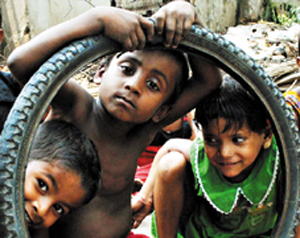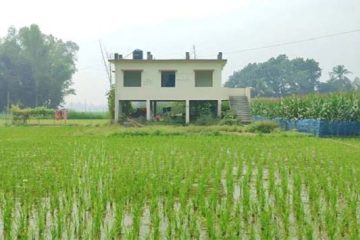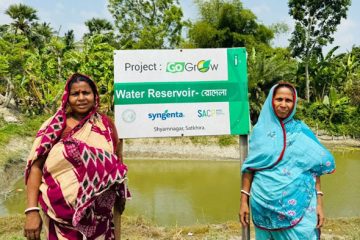 At least five lakh people, including two lakh street children, do not get any assistance either from the government or from the non-governmental organizations and they grow up without education having no knowledge about their rights in society.
At least five lakh people, including two lakh street children, do not get any assistance either from the government or from the non-governmental organizations and they grow up without education having no knowledge about their rights in society.
Dhaka Metropolitan Police Commissioner AKM Shahidul Haq told reporters that the number of teenaged criminals are increasing day by day. The street children are involved in anti-social activities like using arms and peddling drugs and snatching in the city streets.
Over 40 million people are living below the poverty line and most of them do not have their own land in the country. They are living and farming in flood-prone areas and face yearly natural disasters, including SIDR Aila, inefficient agricultural technologies, and low education. Besides, the homeless people also have to face many other challenges.
A draft report of surveys of the Ministry of Social Welfare based on a survey by the Bangladesh Institute of Development Studies said that an estimated 3,80,000 street children live in Bangladesh and 55 per cent of them are in Dhaka city.
About 49.2 per cent of the street children are of the age group of 10 years, while the remaining fall in the age group of 11-19 years. Their gender composition is as follows: boys 74.3 per cent and girls account for 25.7 per cent.
The above report estimates that by the year 2014 the number of such street children would exceed 9,30,000.
The major problems of street children are insecure life; physical and sexual abuse by adults of the immediate community; harassment by law enforcing agencies; inadequate or almost no access to educational institutions and healthcare facilities; and lack of decent employment opportunity.
Much to the relief of all those who want, and aspire, to see a better future for our street children, there have been a few encouraging, albeit limited, efforts to educate them through open air schools (OAS). These schools are managed and administered by a number of national Non Government Organisations (NGOs), mainly in metropolitan cities.
The NGO ‘Concern Worldwide’ has taken an initiative to help at least ten thousand homeless people, including the street children, under the project “Amroa Manush” and that project will continue till 2013.
The project is jointly run by Dhaka City Corporation and the NGOs Shajada Foundation, Social and Economic Enhancement Program (SEEP) Nari Maitree and Collocation for the Urban Poor (CUP).
They established nine centers for the help of the homeless people. They also provide health services, bathe and shelter. The schools are strategically located, covering the city-entry points and working places for street children, such as railway, launch and bus terminals, market places on riverbanks, busy city markets, parks.
Some terminologies and technical jargons used in the training sessions are not easily amenable to children’s understanding.
A typical school functions for two to three hours everyday for up to six days a week. School operating hours are decided so that they do not interfere with the working hours of the children
Dr. KM Akramuzzaman told this correspondent that the government should take some initiative to provide shelter for the homeless people in the city.
Mostofa Kayum Khan, executive director of Collocation for the Urban Poor (CUP) told The New Nation yesterday that street children constitute one of the most vulnerable and marginal groups in the country. “Street children” are essentially the boys and girls for whom the streets, unoccupied dwellings, wastelands etc., have become homes and sources of their livelihood, and they are inadequately protected or supervised by responsible adults.
The National Plan of Action for Children (2005-2010) also clearly emphasised the urgent need for their ‘education and empowerment’. Along the same vein, the National Poverty Reduction Strategy of the country provides for education as a means of ’empowerment of disadvantaged groups,’ including children.






